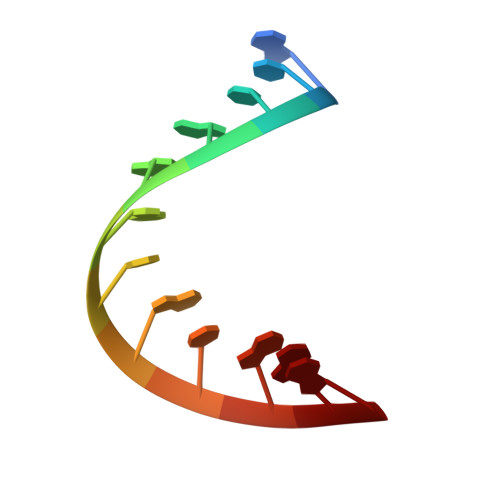The crystal structure of the Rev binding element of HIV-1 reveals novel base pairing and conformational variability.
Hung, L.W., Holbrook, E.L., Holbrook, S.R.(2000) Proc Natl Acad Sci U S A 97: 5107-5112
- PubMed: 10792052
- DOI: https://doi.org/10.1073/pnas.090588197
- Primary Citation of Related Structures:
1DUQ - PubMed Abstract:
The crystal and molecular structure of an RNA duplex corresponding to the high affinity Rev protein binding element (RBE) has been determined at 2.1-A resolution. Four unique duplexes are present in the crystal, comprising two structural variants. In each duplex, the RNA double helix consists of an annealed 12-mer and 14-mer that form an asymmetric internal loop consisting of G-G and G-A noncanonical base pairs and a flipped-out uridine. The 12-mer strand has an A-form conformation, whereas the 14-mer strand is distorted to accommodate the bulges and noncanonical base pairing. In contrast to the NMR model of the unbound RBE, an asymmetric G-G pair with N2-N7 and N1-O6 hydrogen bonding, is formed in each helix. The G-A base pairing agrees with the NMR structure in one structural variant, but forms a novel water-mediated pair in the other. A backbone flip and reorientation of the G-G base pair is required to assume the RBE conformation present in the NMR model of the complex between the RBE and the Rev peptide.
- Macromolecular Crystallography Facility and Structural Biology Department, Melvin Calvin Building, Physical Biosciences Division, Lawrence Berkeley National Laboratory, University of California, Berkeley, CA 94720, USA.
Organizational Affiliation:


















